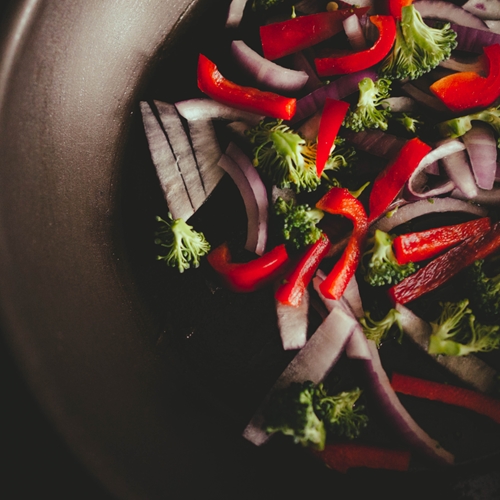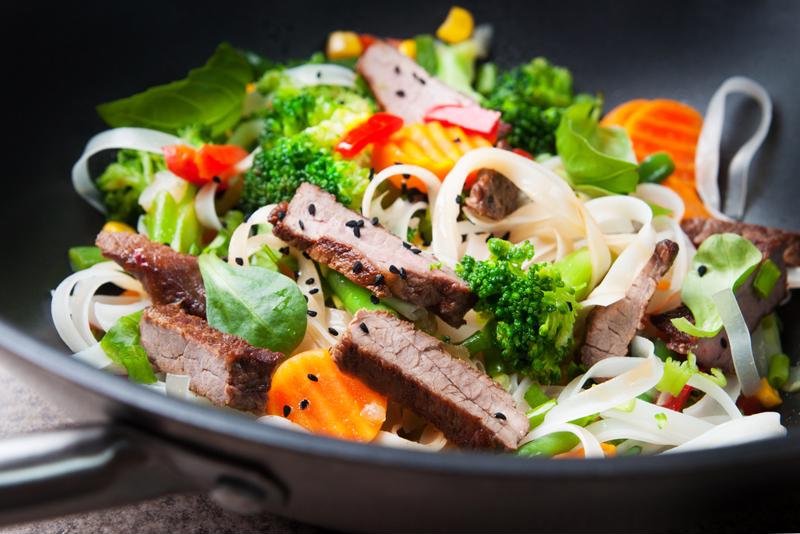
According to Bloomberg, Filipino food is poised to explode in popularity in 2017, with diners lining up at restaurants across the country. This is one trend that culinary academy students should consider trying out in their own cooking. After all, this cuisine brings together influences from Chinese, Spanish and Southeast Asian traditions to create a bold, unique flavors. When you learn about some of the great food coming from chefs inspired by this fusion, you’ll likely want to experiment with a few dishes.
Exploring Filipino flavors
The Philippines include over 7,000 islands with a complex and diverse cultural history. That means meals in the archipelago involve a wide variety of great items that are constantly evolving with new techniques and ingredients. Still, there are a number of entrees that have stood the test of time as staples of Filipino cooking.
“The Philippines have a complex and diverse cultural history.”
One of those foods is chicken adobo, and The Splendid Table provided a basic recipe. Before you do any cooking, allow a day for the chicken thighs – complete with bones and skin – to marinate in a mixture of soy sauce, garlic, black pepper, Filipino palm vinegar, bay leaves and canned tomatoes. Move the mixture into a pot and simmer for 25 minutes.
Remove the chicken from the pot and set it aside. Skim the fat off the cooking liquid and raise the heat, reducing the liquid by half. Meanwhile, place a saute pan coated with extra-virgin olive oil over medium-high heat. Brown the chicken on one side and then flip.
Add slices of onion to the pan as the chicken continues to cook. Transfer the chicken and onions to a serving bowl and pour the reduced juices on top. Serve with a garnish of scallions.
Pork lovers may instead want to take a shot at following the directions for lechon kawali from Serious Eats. They call for placing two pounds of skin-on pork belly in a pot with water, soy sauce, garlic, bay leaves and black peppercorns. Bring to a boil and then drop the heat to a simmer.
Cook for about an hour, checking for the skin to become tender. Then, move the pork onto a wire rack set over a baking sheet, cover with salt and refrigerate for six hours. When the skin is dry, cut into slices.
Heat canola or peanut oil in a wok or Dutch oven to 375 degrees Fahrenheit. Fry batches of pork for up to 10 minutes, until each piece is crisp and browned. Season with salt and serve alongside a dip of spiced cane or rice vinegar.
 Filipino food brings new possibilities for fusion cuisine.
Filipino food brings new possibilities for fusion cuisine.Chefs leading the trend
Over the past few years, a number of U.S. establishments have built their reputations through creating exceptional takes on Filipino foods. Chefs are paying tribute to the fusion-packed traditions of the islands while finding fresh ways to put a personal stamp on dishes.
Bad Saint in Washington, D.C., has won many accolades for its approach to Filipino dining, including being named the second best restaurant in the country for 2016 by Bon Appetit. Chef Tom Cunanan has attracted long lines to the 24-seat dining room with dishes like ukoy, which are fritters of shredded sweet potatoes, shrimp and cilantro. The abodong dilaw is a stew that takes adobo to new places, featuring chicken, burnt coconut and turmeric for extra-tangy results.
Austin culinary arts enthusiasts can find a combination of Filipino, Japanese and Texan influences when they pay a visit to “Top Chef” winner Paul Qui’s Kuneho. As Eater reported, the menu of “perfect bites” includes a blood sausage with sauce in the style of the traditional Filipino pork stew dinuguan. Diners can also enjoy intriguing grilled items like aged beef tongue served with fish caramel and hot mustard or smoked short rib with seasonal kimchi and pickles.
Chef Cristina Quackenbush produces a wide range of delicious Filipino dishes at Milkfish in New Orleans. Guests can start with lumpiang sariwa, a crepe made from a traditional pastry skin, filled with shrimp, pork belly, sweet potato, long beans and carrots, and then topped by peanut sauce, cilantro, bean sprouts and peanuts. For a main course, they might opt for sisig – a pig’s face that’s poached in calamansi, sauteed with liver, onion, garlic, shallots and chili, and finished off with a fried egg and garlic rice side.
Students working toward an online culinary arts certificate will discover many great flavors by investigating Filipino cuisine. This trend that could unlock bold new dimensions in your cooking.




